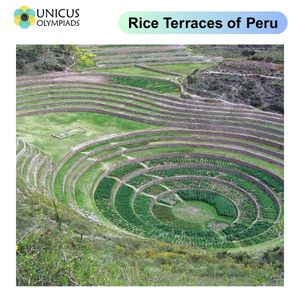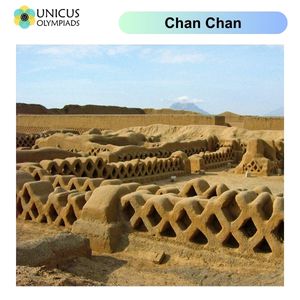

The Rice Terraces and Chan Chan are two remarkable cultural and historical landmarks, both located in Peru. They are vital components of the country’s heritage and are recognized for their incredible significance in terms of agriculture, architecture, and history. Both sites are protected due to their unique value and the need to preserve them for future generations. In this article, we will explore the locations of these iconic sites and why they are protected.
The Rice Terraces of Peru are found in several regions of the country, but the most famous are located in the Sacred Valley of the Incas, near the town of Moray, and the Vilcabamba region. These terraces are located in the high Andes Mountains, and they are known for their impressive design and historical importance. The terraces are still used today for agriculture, and the region's climate and elevation make it an ideal place for growing high-altitude crops like corn, potatoes, and quinoa.

The rice terraces are a striking example of ancient agricultural engineering, and they showcase the ingenuity of the Inca civilization. The terraces at Moray are particularly notable for their circular layout, which creates a series of concentric rings, and it is believed that the Incas used these terraces as a kind of agricultural laboratory to experiment with different crops and farming techniques in various microclimates. This system allowed the Incas to adapt to the challenging conditions of the Andes Mountains and to cultivate a wide variety of crops.
The Rice Terraces of Peru are protected for several reasons:
In recognition of their cultural and ecological importance, the rice terraces in Peru are part of the country's national heritage. Efforts are being made by the Peruvian government and various conservation organizations to protect and preserve the terraces, which includes the implementation of sustainable tourism practices, soil conservation techniques, and the restoration of the agricultural system in some areas.
Chan Chan is an archaeological site located on the northern coast of Peru, near the city of Trujillo in the La Libertad region. It was once the capital of the Chimu Empire, one of the largest pre-Columbian civilizations in South America, and is considered the largest adobe city in the world. The city was built using adobe (sun-dried mud bricks) and covered an area of around 20 square kilometers (7.7 square miles).

Chan Chan was the political, cultural, and religious center of the Chimu people, who thrived in the region between 900 AD and 1470 AD. The city is a masterpiece of ancient urban planning, with well-designed plazas, temples, and residential areas. Its layout is based on a series of large, walled enclosures known as citadels, each serving a different function. The Chimu were known for their skill in pottery, metalwork, and textile production, and many of these cultural achievements have been discovered at Chan Chan.
Chan Chan is protected for several important reasons:
Chan Chan was designated a UNESCO World Heritage Site in 1986 for its outstanding cultural value. Conservation efforts at the site focus on preserving the fragile adobe structures, which are susceptible to weathering due to the coastal climate. The Peruvian government, along with UNESCO and other international organizations, has implemented various preservation projects to protect the site from further damage. These efforts include:
Both the Rice Terraces and Chan Chan are essential examples of how humanity has adapted to and shaped the environment over millennia. These sites represent the rich cultural and architectural achievements of ancient civilizations and offer invaluable knowledge about their societies. As such, they are not only important to Peru but also to the world. Their protection ensures that future generations can continue to learn from and appreciate these remarkable legacies.
UNESCO plays a critical role in the protection of cultural and natural heritage sites like the Rice Terraces and Chan Chan. By designating sites as World Heritage Sites, UNESCO helps raise global awareness, ensures legal protection, and facilitates conservation efforts. This international recognition also helps attract funding for preservation and promotes sustainable tourism practices that contribute to the local economy while minimizing environmental impact.